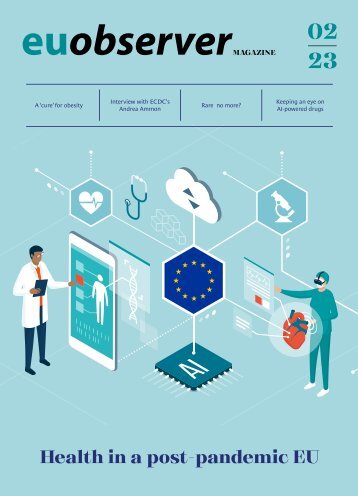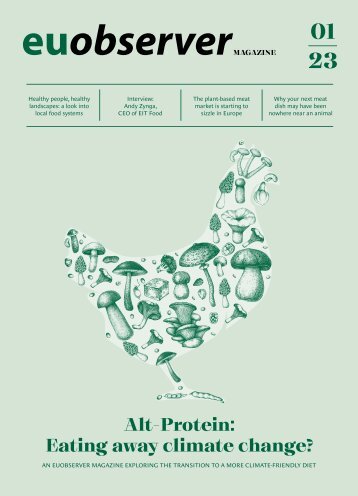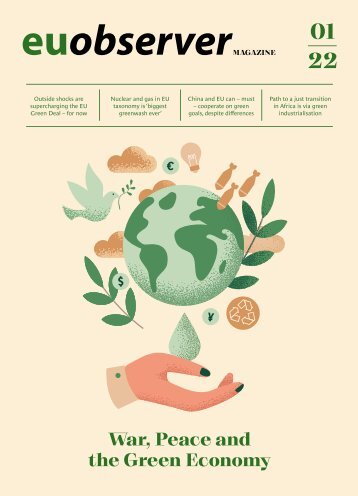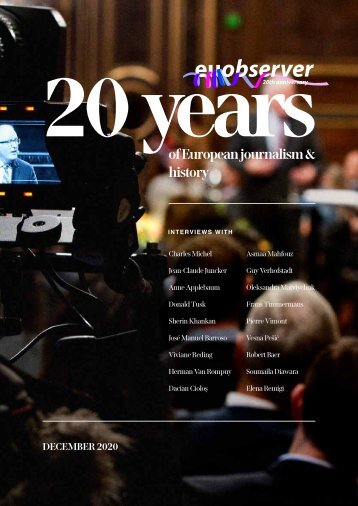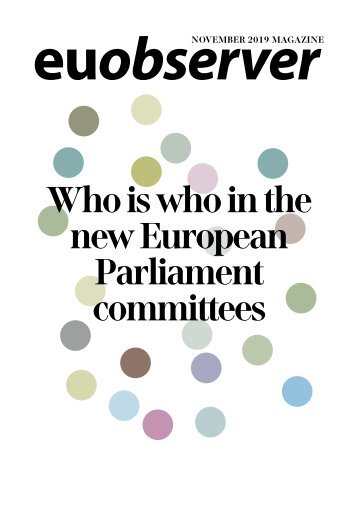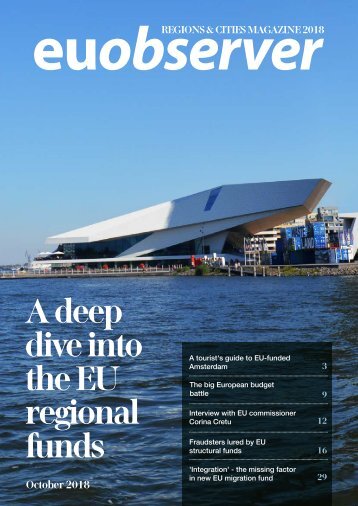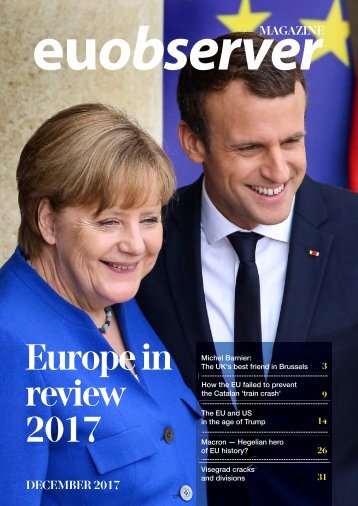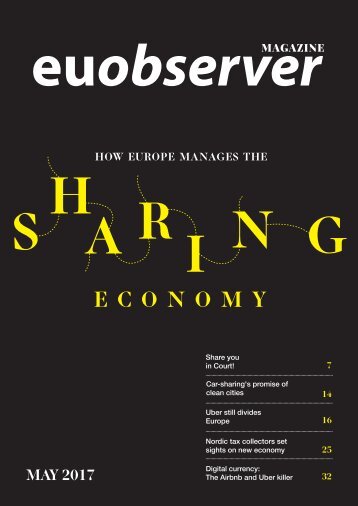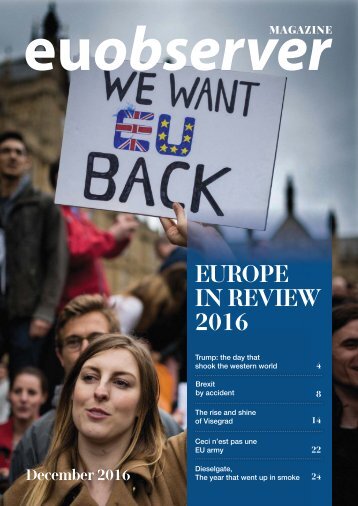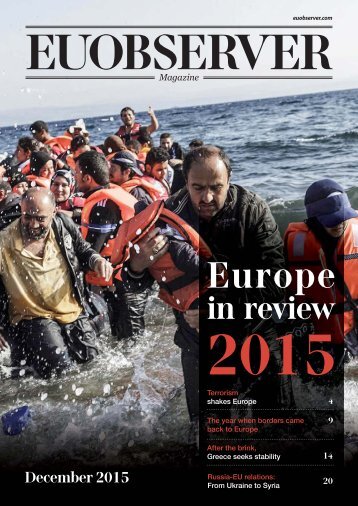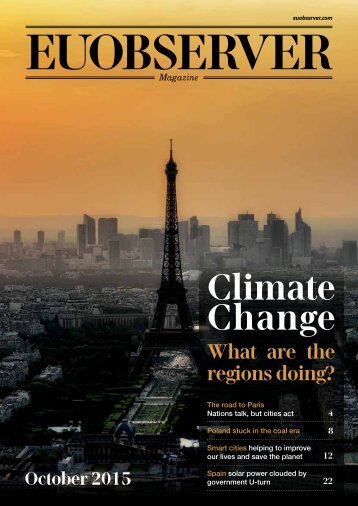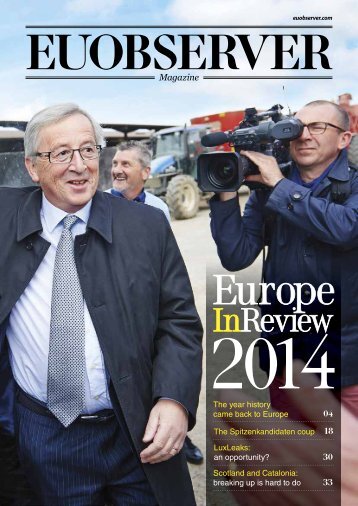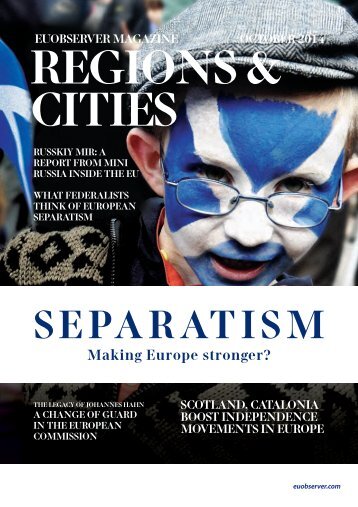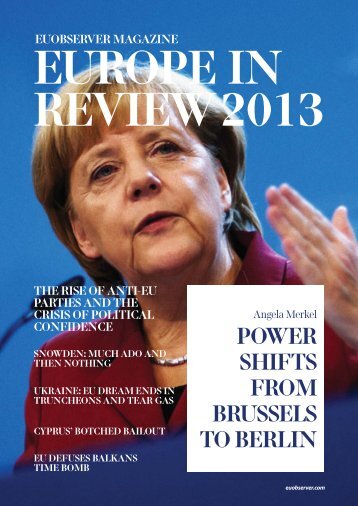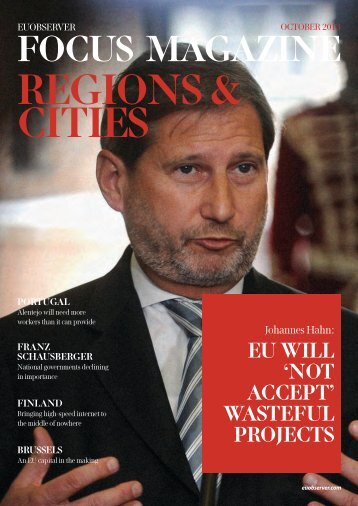20 years of European journalism & history
- Text
- Fusion
- Applebaum
- Leaders
- Baer
- Economic
- Vimont
- Treaty
- Countries
- Euobserver
- European
The
The years that almost broke the euro The financial crisis eventually went to the core of the institutional infrastructure of the euro whose reform is still ongoing a decade later. By Eszter Zalan and Koert Debeuf 2008 the year 2009 & The financial and economic crisis of 2007-2008, followed swiftly by the euro crisis of 2009-2010 and onwards, shook the world. Some analysts declared the end of the euro, one of the most important symbols of Europe's unification. The European Union wasn't ready to deal with both crises. The Great Recession plunged Europe into stagnation. Trillions of euros were lost. Banks were collapsing because their system was built on garbage assets. Millions of people lost their house, their savings or their job. Several European countries were unable to pay or refinance their government debt or bail out their banks. Late in 2009, Greece announced that its budget deficits were higher than it had officially reported to the European Commission, and it was unable to control its deficit and its debt. Under the protection of the euro, Greece had been able to finance its debt cheaply, compared with the sorry state of its finances in reality. Credit agencies like Standard and Poor's lowered the Greek government's debt rating to "junk", making Athens' bonds useless. As Greece was part of the eurozone, devaluation was not an option. But if Greece collapsed, the entire eurozone might collapse with it. Then the same cracks started to appear in Cyprus, Ireland, Italy, Portugal and Spain. The issue went to the core of the euro's infrastructure. Monetary policy was common, but fiscal policies remained with the member states, and common rules had been overlooked at times - even when broken by Germany and France. A political problem quickly emerged as well: taxpayers in more fiscally-prudent countries felt it was unfair that they should finance what they saw as mistakes and overspending made by more fiscally-irresponsible governments. Several governments, from Slovakia to Italy, fell as the EU struggled with its worst crisis to date. Meanwhile, European leaders were not ready for the solution that would stop all speculation against the euro: a European banking union and European collateralisation of a part of the debt of each eurozone country. That issue also provoked constitutional problems in Germany. The European Central Bank (ECB) lowered interest rates so that people, businesses and countries could take loans at a low cost. In May 2010, the European Commission introduced a European Financial Stability Facility in order to be able to give countries financial help where needed. In January 2011, it also created the European Financial Stability Mechanism through which the European Commission would issue bonds, using the EU budget as collateral. These bonds were immediately rated AAA+ by Standard and Poor's. In July 2012, both mechanisms were fused into the European Stability Mechanism, a permanent rescue mechanism to help countries in need. However, probably the most important intervention that stopped the collapse of the eurozone was a speech of the new ECB president Mario Draghi on 23 July 2012. In that speech, Draghi calmed the market and stopped speculation against the euro by stating that the ECB would do "whatever it takes" to safeguard the common currency. The restructuring of the euro remains ongoing, with plans to forge a banking union with common rules still on the negotiating table. But the confidence in the euro has returned, and Estonia, Latvia and Lithuania have joined the common currency in the years since the financial crisis.
China and the EU signed the Geographical Indications Agreement last September. It is the first major trade agreement between China and the EU in recent years and a milestone in China-EU economic and trade cooperation. China is the world’s largest importer of agricultural products and welcomes quality agri-food products from all countries. This agreement is expected to give a huge boost to the fast-growing China-EU agri-food trade. It also further demonstrates that our relations can deliver great benefits to our people. In this increasingly uncertain world, what we need is more confidence and cooperation. — Ambassador Zhang Ming, Head of the Mission of China to the EU CHINA - EU GEOGRAPHICAL INDICATIONS (GI) AGREEMENT This landmark agreement is China’s first comprehensive and high-level bilateral agreement on geographical indications with foreign countries and a milestone in China-EU economic and trade relations. PROTECTION OF GI PRODUCTS The agreement will protect 100 Chinese GIs in the EU and 100 EU GIs in China. The scope will expand to cover an additional 175 GIs four years after its entry into force. PROTECTED CHINESE GIS such as: • Anji White Tea • Gannan Navel Orange • Yantai Apple • Korla Pear • Wuchang Rice • Wuchuan Mooncake PROTECTED EU GIS such as: • Champagne • Feta Cheese • Münchener Bier • Parma Ham • Tokaj Wine • Polish Vodka BOOSTING BILATERAL TRADE China is the EU’s second-biggest trading partner and the EU is China’s biggest trading partner. The GI agreement will facilitate China-EU agri-food trade. VALUE OF CHINA’S AGRI-FOOD TRADE WITH THE EU Million EUR Totaling 15.3 billion EUR, China’s agri-food imports from the EU grew by almost 40% in 2019, the highest growth over Japan (15%) and the US (9%). ChinaEUMission www.chinamission.be 21 — EUOBSERVER ANNIVERSARY 2020
- Page 1 and 2: 20 years of European journalism & h
- Page 3 and 4: From Milošević to freedom - and b
- Page 5 and 6: Sherin Khankan: 'We are the first m
- Page 7 and 8: Say hello to your new currency, the
- Page 9 and 10: with Shia-Muslim Iran and unleashed
- Page 11 and 12: Europeans, have experienced an unpr
- Page 13 and 14: ITER cryostat base lift off operati
- Page 15 and 16: The declaration of Laeken launched
- Page 17 and 18: Originally, the directive would hav
- Page 19: "I remember going there [Ireland] a
- Page 23 and 24: Aerial view of EEAS building in Bru
- Page 25 and 26: dictatorships. In 2011, the Europea
- Page 27 and 28: eferendum - to be absent at the cel
- Page 29 and 30: the Ukraine: 'He told me he loved m
- Page 31 and 32: REFUGEE CRISIS - THE MALIAN the yea
- Page 33 and 34: In July, the EU Commission appointe
- Page 35 and 36: "Now, the US doesn't trade with Ira
- Page 37 and 38: Yet 2018 still managed to consolida
- Page 39 and 40: EU's Green Deal - a global 'gold st
- Page 41 and 42: EU the year 2020 solidarity tested
- Page 43 and 44: "Now, there is more political will
Inappropriate
Loading...
Mail this publication
Loading...
Embed
Loading...
